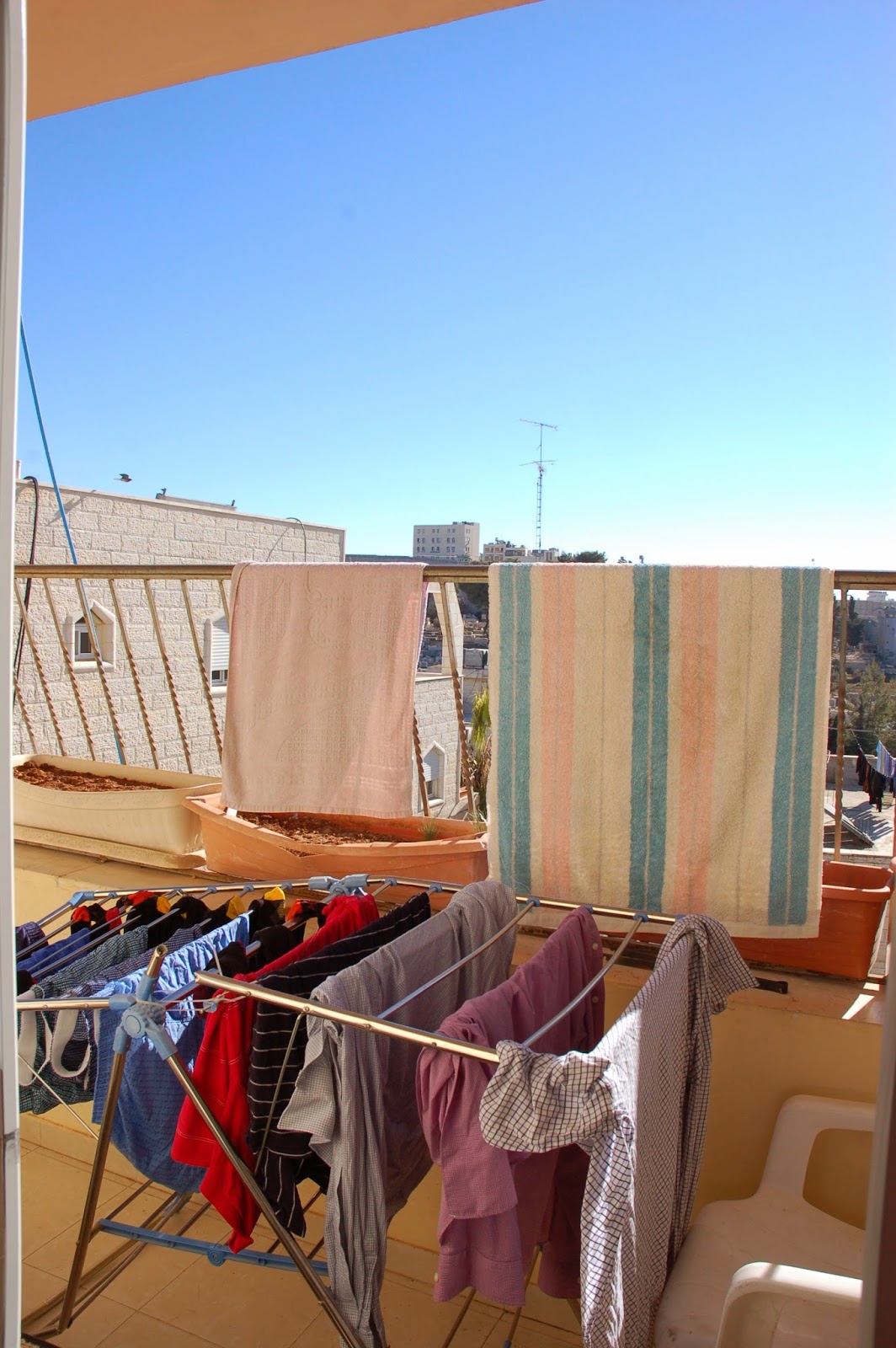Today my family has a rest day. I decided to take a walk to Solomon's Pools. These are three absolutely massive reservoirs that supplied water to Bethlehem and Jerusalem. They date from Herod's time rather than Solomon, but that still makes them 2000 years old. They hold 200 million litres.
After about an hour walking south from Bethlehem centre, I came out into open countryside. The mound on the left of the horizon is Heridian, King Herod's summer palace. It was very warm walking, so I was grateful for the barber who invited me to come and sit down and share a coffee with him.
I walked down the steep valley through Artas, one of the oldest towns in Palestine, dating from the iron age. This is also the site of the really beautiful Convent - Hortus Conclusus.
At this point I had no idea which way to go. The people of Artas do not generally speak English and no-one could understand me. Just as I was starting to worry, a nun appeared. She gave me precise directions and I was so grateful. Someone always appears to help me when I need it.
After a very steep climb I arrived at these incredible cisterns. I was fairly exhausted, but was called over by a family on an outing from Hebron who were having a bar-b-cue. They immediately found me a chair(!) and something to drink. Then they brought over the local equivalent of a hamburger. I had brought lots of things for me lunch and yet again people feed me. I had to have my picture taken with all the children.
Unfortunately, the occupation is never far away. On this hill overlooking Artas is fence, and some pylons. What happens is that a few Israeli settlers make a temporary encampment on a hill. Then the temporary encampment is provided with small housing units. Next the water and electricity comes, and the encampment is surrounded by a fence. A new road is build and then the temporary housing units are systematically replaced by new houses and you have a settlement - on Palestinian land. Meanwhile only 3kms of the 12kms of roads in Artas have been paved.
It is puzzling that the israelis keep complaining about Palestinian attacks on the settlements, but they still keep building them closer and closer to the Palestinians. Seems that they would be much safer in their own country.
Alongside this (once popular and now deserted) tourist attraction is a beautiful new congress centre. I felt a sense of pride for the Palestinians in building this magnificent centre. And when I got home I read the following:-
"Rarely does a night go by without the sounds of the Israeli army’s shells and rockets shattering the peacefulness of the once tranquil and serene village of al-Khader, where Solomon’s Pools are. The Pools are located at the southern edge of Bethlehem in Area A, which is under the control of the Palestinian National Authority. A major Palestinian historical site in Bethlehem, and one of the most unique and attractive locations in the whole of the Palestinian territories, the Israeli army has kept the Pools under fire since January 2001 causing a great damage to the historical site as well as to the new Convention Center and the Crafts Center that are part of an ambitious project designed to attract new types of tourism, i.e. conference tourism. "
I felt foolish because I had just walked through the site without realising the family having a picnic were such a threat to the Israelis.

























